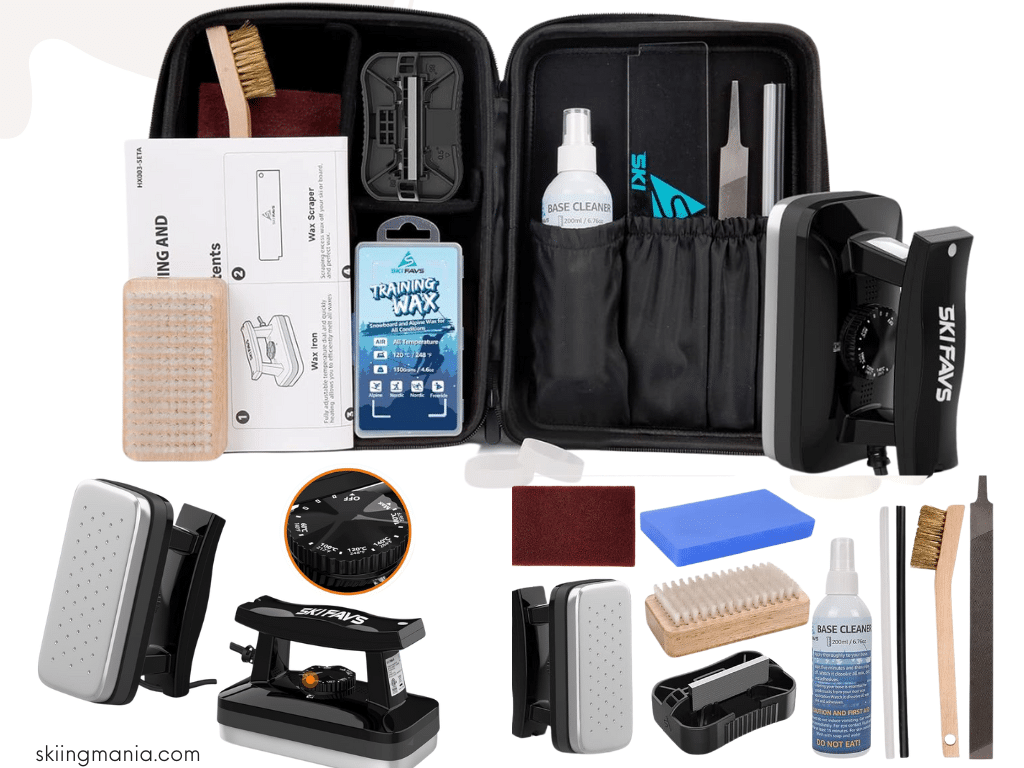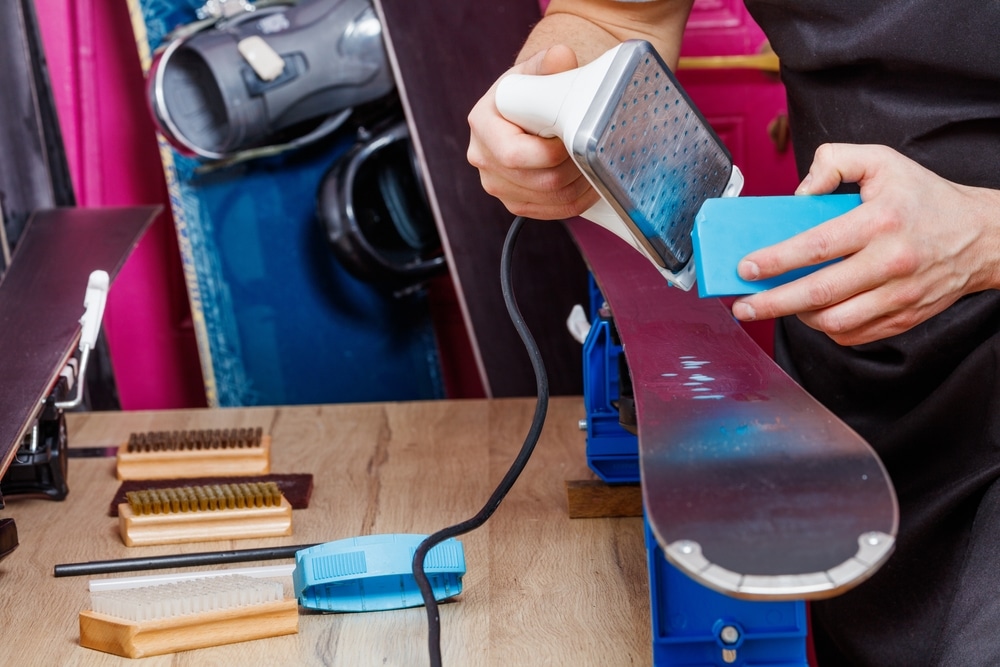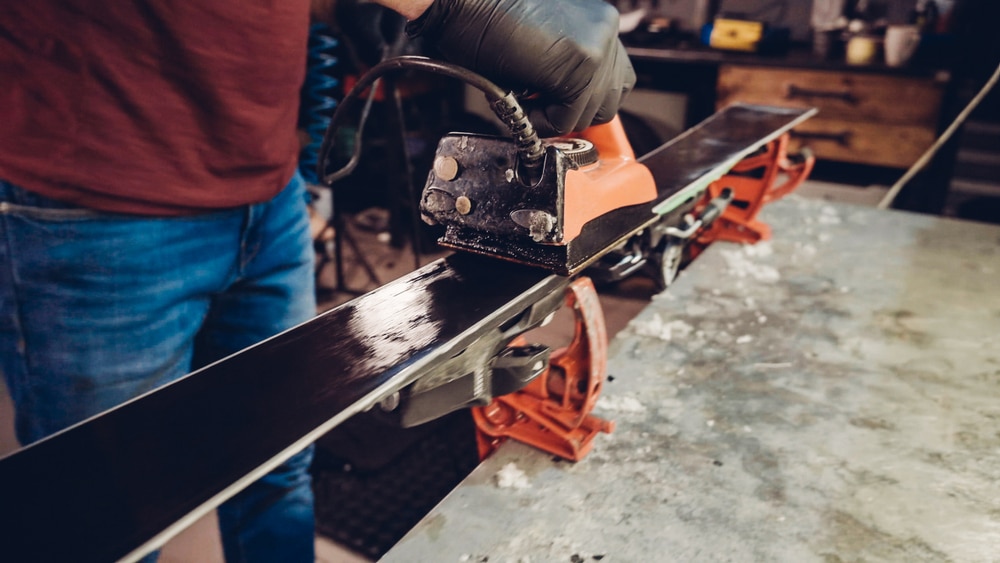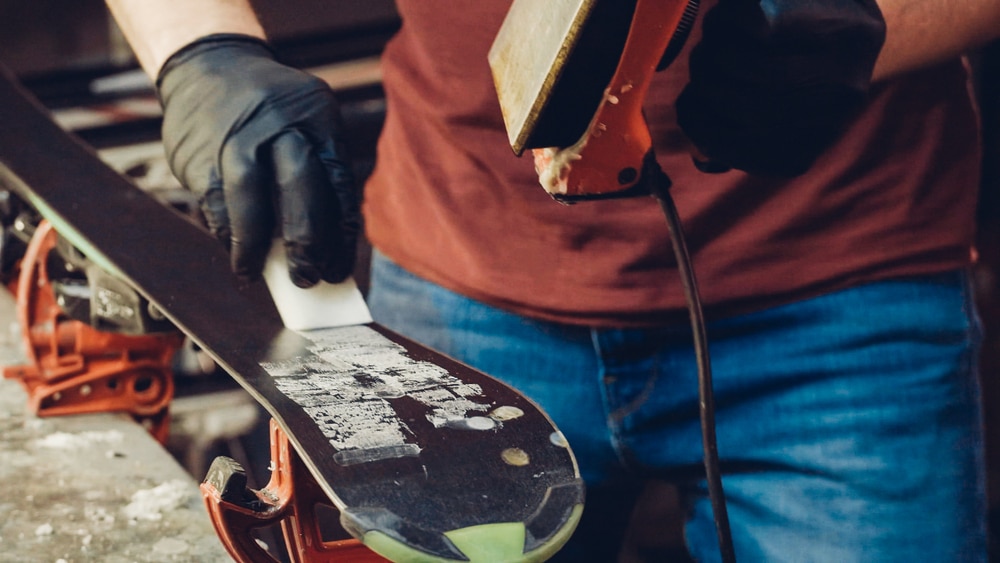Table of Contents
When it comes to skiing, speed, and performance are heavily influenced by the condition of your skis. One of the most crucial aspects of ski maintenance is waxing, which helps reduce friction between the skis and the snow, ensuring a smooth, fast glide. Whether you’re a competitive skier or an avid enthusiast, knowing how to wax your skis properly can make all the difference in your experience on the slopes. Learning the proper method to apply wax properly can significantly enhance the performance of your ski. This detailed guide will take you through the entire process of wax skis to ensure proper turning for optimal glide and grip and to ensure you can enjoy your time in the snow.
Essential Tools and Materials to Wax Skis

Ensure you have all the supplies and tools you’ll need before learning the process of how to wax skis.
- A waxing iron or a clothing iron is dedicated solely to waxing.
- Glide wax is appropriate for the temperature and snow conditions.
- A nylon brush is used to polish the scraped base.
- A plastic scraper to remove excess wax.
- A base cleanser is used to clean the skis in preparation for fresh wax application.
- A cork for grip waxing if you are waxing cross-country skis.
- Ski and snowboard vices to secure your equipment while you work on it.
1. Preparing Your Skis

Check for severe scratches and other damage on your skis or board, such as gouges. Fill in the damage with P-Tex candles to complete the base repair. Once the P-Tex candle is lit, pour the molten substance into the gouge and let it cool. After it hardens, smooth it down to the base with a metal scraper.
Base Cleaner
Use a base cleaner to remove debris, old wax, and other impurities from the base of your skis or board. Apply the cleanser and rub it over the base using a cloth until it is clean. This step is essential for ensuring that the new wax adheres appropriately.
2. Waxing Process
Turn on your waxing iron and adjust the temperature so your glide wax is at the right temperature. The melting points of various waxes are usually written on the box. Ensure the clothing iron you’re using doesn’t have steam holes because those can harm the skis base.
Apply Wax
Melt the glide wax by holding it to the hot iron and let it drip onto the skis base in a zigzag pattern extending from the tip to the tail. The goal is to distribute the wax across the surface evenly.
Spread the Wax
After spilling the wax over the ski’s base, evenly distribute it with the iron. To keep the base from burning, keep the iron moving constantly. To ensure a uniform layer of wax, move the iron from tip to tail. The motion should be smooth and consistent to avoid overheating any part of the base.
Cooling
Give the wax at least 30 minutes to settle and calm. This step is essential because it allows the wax to penetrate the ski base, enhancing efficiency and durability fully.
3. Scraping and Brushing
After the wax has solidified, scrape out excess wax from skis with a plastic scraper. Hold the scraper at a 45-degree angle to remove all visible wax and work from tip to tail. It’s essential to be thorough but gentle to avoid damaging the base.
Nylon Brush
After scraping, polish the base using a nylon brush. Brush using long, continuous strokes from tip to tail. This process smooths the surface of the skin, improving its glide and helping to remove any leftover wax particles. Brushing is also helpful in showcasing the base’s structure, which facilitates water dispersion and increases speed.
Cross-Country Ski Waxing

Grip waxing must be done in addition to glide waxing for cross-country skis. The grip wax is applied in the kick zone (the middle section of the ski) to provide traction. After applying the grip wax, spread it evenly and smooth it with a cork. This maintains a smooth glide while ensuring good traction during the kick phase of skiing.
Also, if you plan to skate on a cross-country ski, you can discover what to wear cross-country skiing to enjoy the experience.
Skate Ski Waxing
Waxing skate skis is done like alpine skis. Thoroughly scraping and brushing the base is key to achieving a smooth glide. Since skate skis do not require grip wax, the focus is on maximizing glide.
Tips for Optimal Performance

Regular Maintenance
Regularly wax your skis or board to maintain optimal performance. The snow conditions determine the frequency and how often you ski. Recreational skiers should generally wax their skis every four to six outings, but professional skiers require more frequent waxing. There are several ski repair methods to ensure optimal performance and efficiency.
Environmental Conditions
Choose your ski wax based on the temperature and type of snow. Softer waxes are best suited for warmer, wetter snow, whereas harder waxes perform better in colder weather. Manufacturers frequently include instructions on the packaging to help you select the appropriate wax.
Storage
Keep your board or skis in a dry, cold place. Avoid putting them in warm areas, like a vehicle, as this may cause the base and wax to deteriorate. Proper storage ensures that your equipment remains in good condition and ready for use.
Iron Moving
Keep the iron moving while waxing to prevent overheating and damaging the ski base. The base may burn from a stationary iron, resulting in irreversible damage.
Base Repair
Regularly inspect and perform base repairs to keep your skis or board in top condition. Immediate damage repair keeps problems from getting worse and impacting performance.
Base Cleaner
Use a base cleaner before every waxing session to ensure a clean surface for the wax to adhere to. This step is critical for achieving a smooth and even wax application.
Conclusion
By following the detailed step-by-step method and guidelines on how to wax skis, you will master this skill, whether it is a cross-country ski or a skate ski. Also, remember to wax regularly, choose the suitable wax for the conditions, and always keep your iron moving to avoid damaging your equipment. These guidelines will help you in waxing your ski, thereby maintaining its structure, speed, and efficiency.

